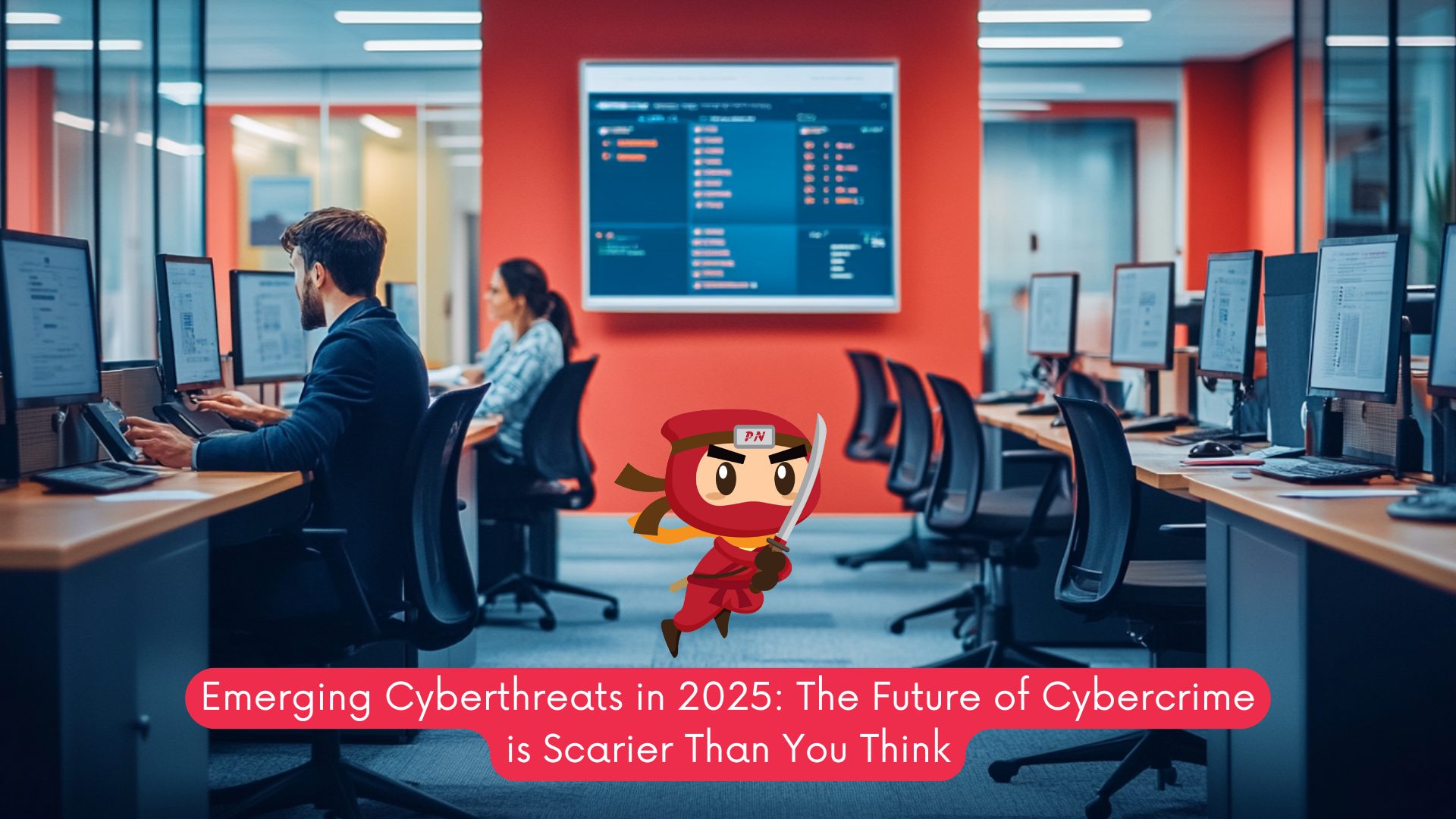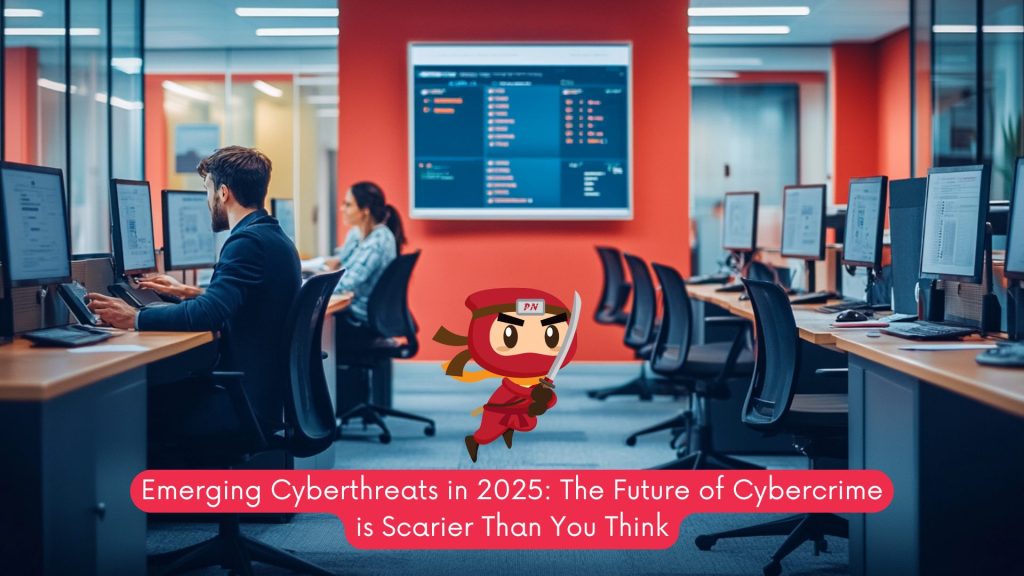KEEP IN TOUCH
Subscribe to our mailing list to get free tips on Data Protection and Cybersecurity updates weekly!







As the digital economy expands, cybercriminals are innovating at an unprecedented pace. 2025 is shaping up to be a year in which threats are not only more sophisticated but also more targeted and pervasive. The proliferation of artificial intelligence, cloud technologies, and blockchain systems has introduced new attack surfaces, leaving organisations and individuals vulnerable to attacks that were inconceivable just a few years ago.
Cybercrime is no longer limited to opportunistic attacks; it has evolved into a high-stakes, professionalised ecosystem, with entire criminal networks operating like legitimate enterprises.
Emerging threats such as AI-powered phishing, ransomware-as-a-service, and smart contract exploits are redefining the landscape. These attack vectors combine technological sophistication with social engineering, creating a complex web of vulnerabilities.
Cybersecurity professionals must now consider not only technical defences but also human factors, regulatory obligations, and strategic response planning. The future of cybercrime is not just about malware or stolen credentials; it is about persistent, automated, and multi-dimensional attacks that can bypass traditional safeguards.
Phishing has always relied on social engineering, exploiting human trust to obtain sensitive information. In 2025, AI is making these attacks far more convincing. Attackers can now use generative AI to bypass human-checking barriers like captchas, craft emails and messages that mimic writing styles, tones, and even the behavioural patterns of legitimate colleagues or executives. According to Darktrace, 82 per cent of AI-generated phishing emails are indistinguishable from genuine communications, and over half bypass existing security controls.
This level of sophistication has serious implications for organisations. Traditional spam filters and threat detection tools often fail to flag these attacks because they do not resemble previously identified patterns. Attackers are increasingly leveraging legitimate domains, collaboration platforms, and messaging systems to lend credibility to their messages. The human factor remains a critical vulnerability; even well-trained employees can be deceived by messages that appear authentic, especially under pressure or when personalised information is used.
Furthermore, AI-generated campaigns are scalable. Attackers can send thousands of personalised emails in minutes, continuously adjusting content based on recipient responses. This iterative approach allows them to refine their techniques and increase success rates over time. Cybersecurity teams must therefore adopt adaptive defences, combining behavioural monitoring, employee training, and rapid incident response to counter these evolving cybercrime threats.
Ransomware has long been a significant threat, but the 2025 landscape is characterised by the emergence of ransomware-as-a-service (RaaS). This model allows even inexperienced actors to launch attacks by subscribing to ransomware kits and infrastructure operated by professional cybercriminals. RaaS platforms provide automated deployment, payment collection, and anonymisation services, lowering the barrier to entry and increasing the frequency and scale of attacks.
The consequences are severe. Organisations that previously considered themselves unlikely targets are now at risk, as RaaS affiliates can select victims based on vulnerability rather than profile. The financial impact is compounded by the risk of data exfiltration, where attackers threaten to release sensitive information publicly if ransoms are not paid. Recent studies suggest that RaaS-related incidents have doubled in scale in 2024, with significant attacks affecting governments, healthcare, logistics, and many other sectors worldwide.
RaaS also emphasises the importance of preventive measures. Strong backup strategies, robust access controls, and proactive vulnerability assessments can reduce the impact of attacks.
Organisations cannot rely solely on reactive responses. RaaS demonstrates that cybercrime has become a professionalised service industry, where speed and efficiency are prioritised by attackers just as organisations prioritise operational continuity.
Blockchain and decentralised finance (DeFi) systems, while revolutionary, introduce new vectors for cybercrime. Smart contracts—self-executing code that governs digital transactions—can contain vulnerabilities exploitable by sophisticated attackers. In 2025, the number of reported smart contract exploits is expected to increase as both public and private projects adopt blockchain technology without comprehensive security audits.
These exploits can result in substantial financial losses. A flaw in contract logic may allow attackers to siphon funds, manipulate transaction records, or disrupt entire platforms. Unlike traditional systems, vulnerabilities in smart contracts are often permanent; once deployed, flawed code is difficult to alter, making proactive security measures critical. The rising complexity of smart contract architectures and the use of interconnected DeFi protocols further increase systemic risk, where a single exploited contract can trigger cascading financial impacts.
Security professionals must therefore adopt multi-layered approaches, combining automated code analysis, manual audits, and simulated attack scenarios. Education of developers on secure coding practices, along with continuous monitoring of deployed contracts, is essential to reduce risk exposure. As blockchain adoption grows, so too does the need for organisations to anticipate these highly specialised cyber threats.
Despite technological sophistication, the human factor remains central to cybersecurity. Employees and users often represent the weakest link, whether they fall for phishing emails or misconfigure systems. Organisations that integrate regular training, realistic simulations, and clear incident response plans can significantly reduce vulnerability to emerging threats.
Exercise-based preparation and penetration testing allow teams to identify gaps before attackers exploit them. Cybercriminals are increasingly combining automated attacks with social engineering, making awareness and procedural discipline more crucial than ever. The intersection of AI-powered attacks, RaaS, and smart contract exploits underscores the need for a proactive security culture, where both technical and human elements are continuously assessed and fortified.
As cybercrime becomes more sophisticated, organisations must partner with expert cybersecurity providers to maintain resilience. Privacy Ninja offers a comprehensive suite of services designed to protect against emerging threats. Our email phishing simulation services allow teams to test responses to AI-generated and social engineering attacks, helping employees recognise and report suspicious activity effectively.
Additionally, Privacy Ninja provides Vulnerability Assessment and Penetration Testing (VAPT) to uncover weaknesses across networks, applications, and operational practices. Data Breach Management services facilitate rapid containment and investigation when incidents occur, while our DPO-as-a-Service ensures compliance with the PDPA and fosters robust data governance.
For organisations leveraging blockchain or DeFi platforms, Privacy Ninja also offers Smart Contract Audit services to identify vulnerabilities in code, prevent exploits, and ensure the integrity of automated financial and operational workflows.
By integrating technical expertise with practical guidance, Privacy Ninja enables organisations to transition from reactive responses to proactive defence. In an environment where attackers leverage AI, RaaS, and blockchain vulnerabilities, a multi-layered security approach is essential. Organisations that invest in continuous training, monitoring, and simulated attack scenarios are better positioned to detect, respond, and recover from incidents, safeguarding both data and reputation.
The cyber threat landscape in 2025 presents unprecedented challenges. AI-powered phishing, ransomware-as-a-service, and smart contract exploits demonstrate the evolving sophistication and scale of attacks. Organisations cannot rely solely on static security tools or policies. Success requires a holistic strategy, encompassing employee awareness, continuous testing, and adaptive defences.
By partnering with experts like Privacy Ninja, businesses can anticipate threats, strengthen operational resilience, and ensure that even in the face of sophisticated cybercrime, they maintain continuity, trust, and long-term viability.